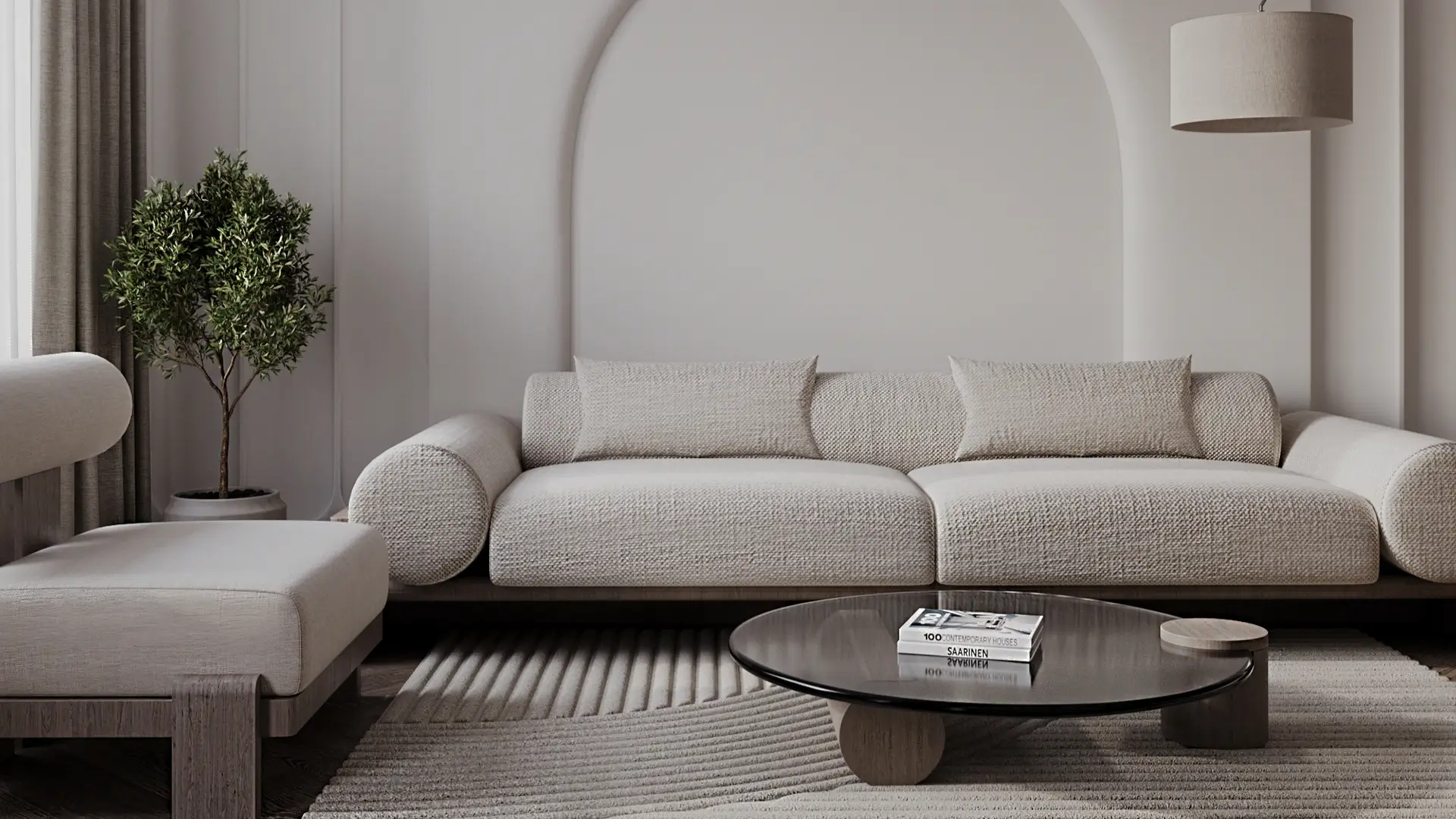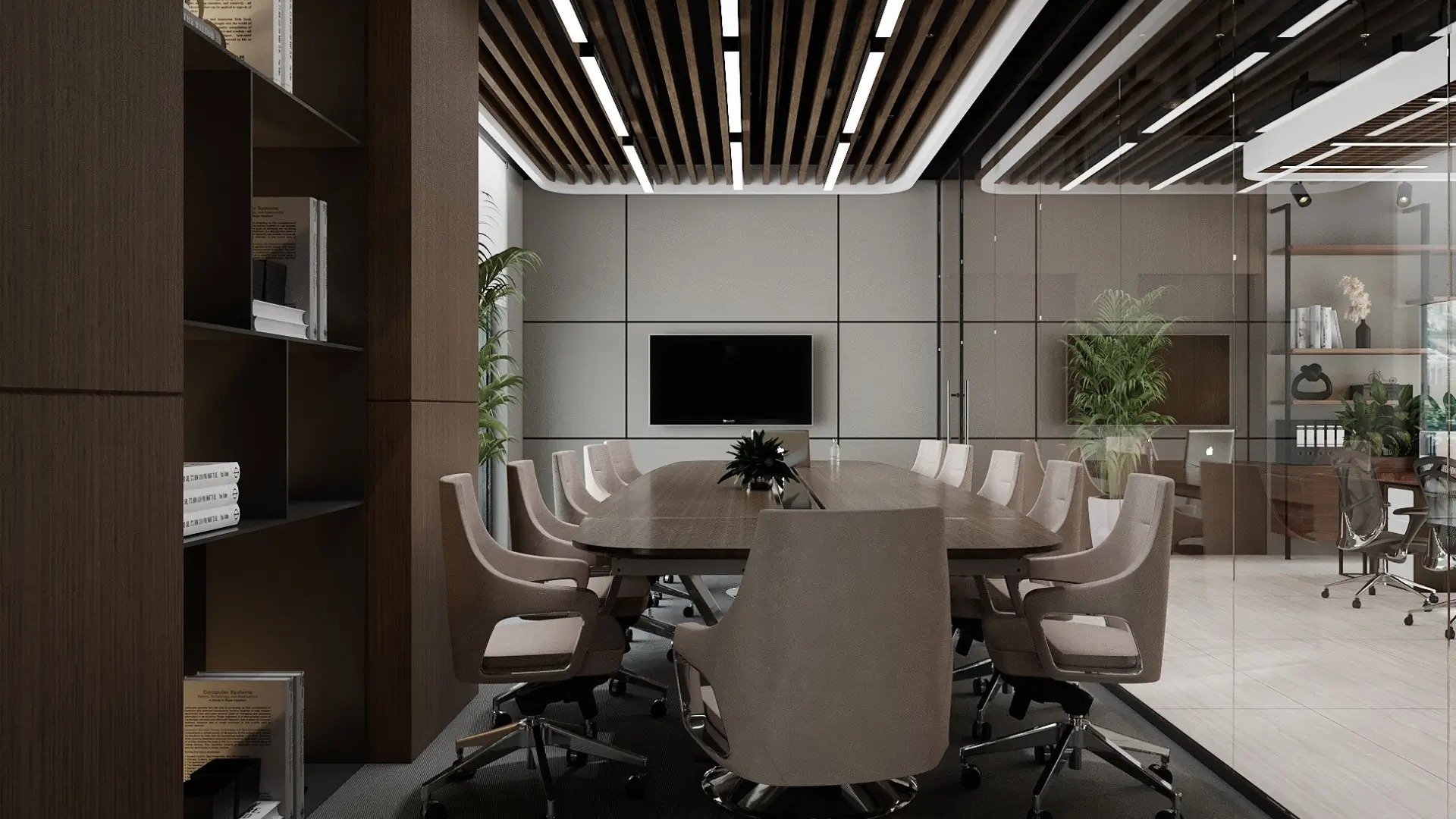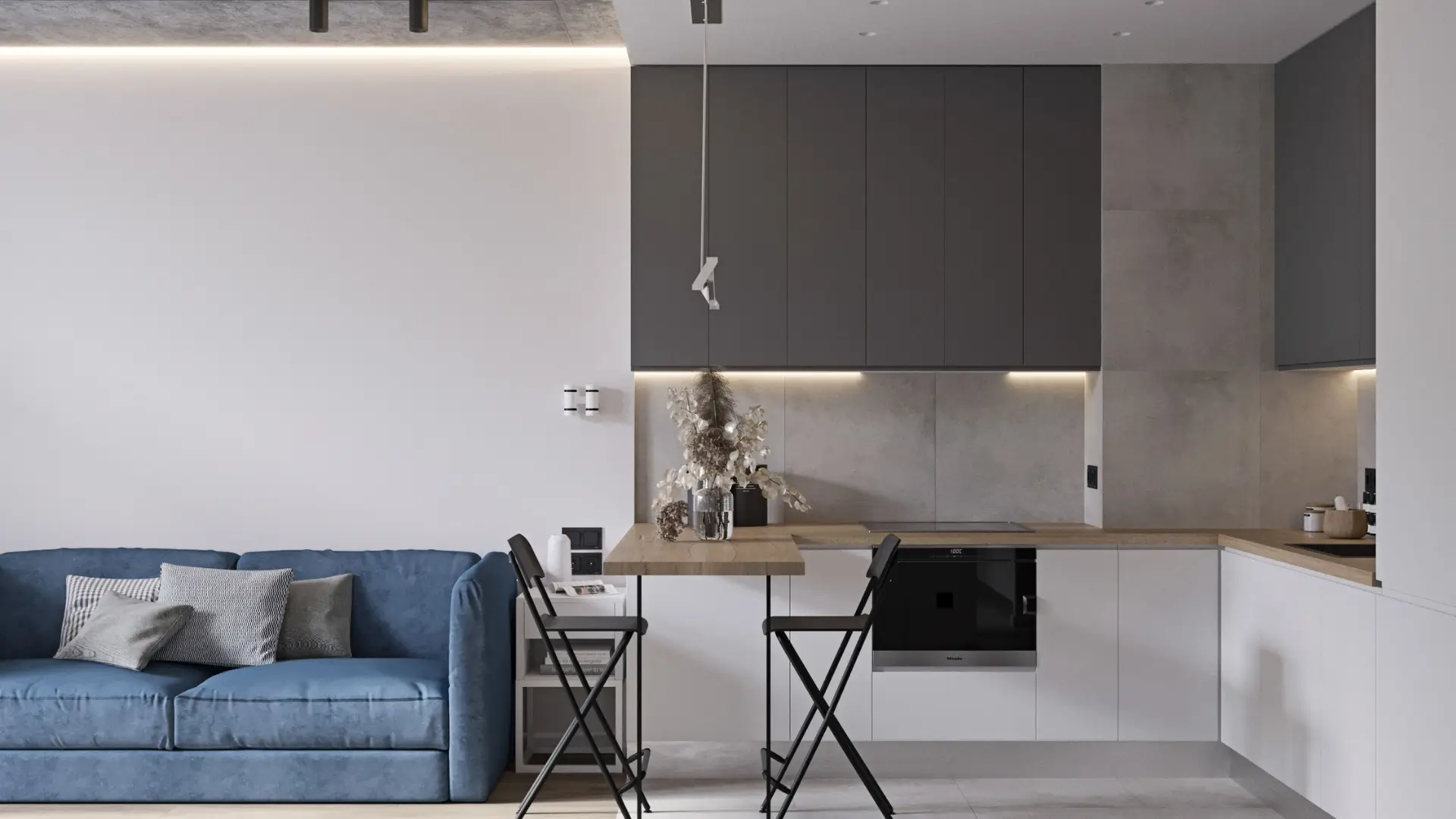When it comes to home design, even the smallest details can make a significant impact. While you might invest heavily in renovations, furnishings, and decor, certain oversights or poor choices can unintentionally make your space look less appealing and even cheap. Whether you’re planning to sell your home or simply want to create a more luxurious and cohesive environment, it’s crucial to identify and avoid these common design pitfalls.
1. Cluttered Spaces:
Clutter may seem harmless at first glance, but it can quickly strip your home of its charm and sophistication. When items are left scattered or stacked without purpose, rooms begin to feel smaller, chaotic, and far less inviting. Even the most luxurious furniture or stylish décor won’t shine in a space overwhelmed by unnecessary belongings. Clutter not only impacts visual appeal but also affects functionality and comfort. A disorganized living room, an overcrowded kitchen counter, or jam packed shelves can make everyday tasks feel stressful and uninspired.
How to Fix It: Start by reassessing what truly belongs in each room. Embrace a minimalist approach and prioritize quality over quantity. Invest in smart storage solutions, like built-in cabinets, under-bed drawers, or wall mounted shelves to maintain a tidy appearance without sacrificing utility. Clear surfaces whenever possible and choose a few well placed decor pieces instead of filling every inch. Use baskets or stylish bins to conceal essentials and keep the space looking polished. By reducing clutter, you not only restore balance and harmony to your interiors but also elevate the entire atmosphere, making your home feel more serene, elegant, and welcoming.
2. Cheap or Mismatched Furniture
One of the most common missteps in interior design is filling a space with cheap or mismatched furniture. While affordability is important, sacrificing quality and cohesion can make even a beautifully painted and well lit room feel visually chaotic and disconnected. Furniture serves as the foundation of any room’s design, and when it lacks consistency in style, size, or color, the space can quickly lose its charm and appear disorganized.
Low-quality furniture often shows signs of wear and tear much faster, from sagging cushions to chipped surfaces, instantly making your home look less polished. Similarly, mixing furniture from drastically different styles without a unifying element like a shared material, color tone, or silhouette creates a jarring effect that distracts rather than delights.
How to Fix It: To fix this, prioritize fewer but better quality pieces that suit the scale of your room. Investing in timeless, versatile furniture ensures longevity and visual appeal. Choose a consistent style or theme, whether modern, rustic, or minimal and stick with a cohesive color palette throughout. Even when incorporating different pieces, aim for harmony. With thoughtful selection, your space will feel intentional, inviting, and well put together no matter your budget.
3. Ignoring Lighting
Lighting is one of the most overlooked yet powerful elements in interior design. Many homeowners focus heavily on furniture, color palettes, and decor, but fail to realize that without proper lighting, even the most beautifully designed spaces can fall flat. Poor lighting creates a gloomy, uninviting atmosphere that can make rooms feel smaller, colder, and less comfortable. Whether it’s a lack of natural light or the overuse of harsh, cool toned bulbs, inadequate lighting significantly diminishes a home’s aesthetic and emotional appeal.
How to Fix It: To fix this, it’s essential to layer your lighting thoughtfully. Start with ambient lighting, which provides general illumination and sets the foundation for the room’s brightness. Add task lighting where needed such as under kitchen cabinets, in reading nooks, or above bathroom mirrors to support function. Finally, use accent lighting like wall sconces, pendant lights, or even LED strips to highlight architectural features or artwork.
Choosing warm toned bulbs can instantly make a space feel cozier and more inviting. Also, don’t underestimate the value of natural light, keep windows unobstructed and use sheer curtains to let the daylight in. With a well planned lighting strategy, your home can look and feel more vibrant, spacious, and luxurious.
4. Outdated Fixtures and Hardware
One of the most overlooked yet impactful elements in home design is hardware. Outdated doorknobs, cabinet handles, faucets, and light fixtures may seem like minor details, but they play a huge role in the overall visual appeal of your space. Even the most well decorated room can feel tired or dated if the fixtures haven’t been updated in years. These small components often escape notice during renovations, yet they are among the first things people interact with, whether opening a door or turning on a light.
How to Fix It: Swap out old, worn, or builder grade hardware for sleek, modern alternatives. Whether it’s brushed nickel, matte black, or brass finishes, the right fixtures can instantly refresh any space. This simple upgrade is both affordable and effective, making it one of the easiest ways to enhance the sophistication and contemporary feel of your home without major remodeling.
5. Poor Paint Choices
The paint color you choose can either elevate or completely ruin the look and feel of a room. While many homeowners get tempted by bold or trendy colors, using harsh tones or mismatched shades can throw off the entire balance of your interior design. Poor quality paint can also lead to streaks, uneven finishes, and faster wear and tear, all of which diminish the room’s appeal. A color that looks good in the store may not suit your lighting, furnishings, or overall aesthetic once applied at home.
How to Fix It: Opt for timeless, neutral shades that complement your home’s décor and create a cohesive atmosphere. If you want to experiment with color, use accent walls or accessories. Always test a few samples on your wall and observe them in different lighting throughout the day before making a final decision. Quality paint always pays off in appearance and durability.
6. Neglecting Curb Appeal
Your home’s exterior sets the tone before anyone even steps inside. Neglecting curb appeal can make an otherwise beautiful home feel tired, uninviting, and even undervalued. Elements like overgrown lawns, chipped paint, broken pathways, or an outdated front door can give the impression of poor upkeep even if the interior is stunning. First impressions count, especially in real estate, where buyers often form opinions within seconds of arrival.
How to Fix It: To boost curb appeal, start with the basics: trim bushes, mow the lawn, and keep walkways clean. A fresh coat of paint on the front door can instantly refresh the façade, while modern light fixtures add a welcoming glow. Don’t underestimate the impact of small details like house numbers, a sleek mailbox, or seasonal plants. These affordable upgrades can dramatically enhance your home’s value and charm, making it look well maintained and more desirable to guests or potential buyers.
7. Over-Themed Rooms
While themed rooms can be a fun way to express your personality or interests, going overboard often leads to a space that feels gimmicky, cluttered, or even juvenile. Overly themed interiors such as nautical bathrooms with anchors everywhere or movie themed living rooms plastered with memorabilia can quickly become outdated and limit the flexibility of your space. Instead of adding charm, they can detract from your home’s overall aesthetic and make it harder for potential buyers to envision themselves in the space.
How to Fix It: Use themed elements as subtle accents rather than the dominant feature. Incorporate neutral colors and timeless furniture, and allow the theme to appear through smaller decor items like cushions, art, or statement pieces. This approach keeps your space feeling fresh and stylish while still reflecting your personality. Remember, a well balanced design always stands the test of time.
8. Too Many Personal Photos
While family photos add warmth, covering every wall with personal images can make a home feel less like a showpiece and more like a scrapbook.
How to Fix It: Limit personal photos to certain areas like hallways or bedrooms. Use framed artwork, mirrors, or neutral prints in common spaces.
9. Ignoring Scale and Proportion
Furniture or decor that is too big or too small for a space can throw off the room’s balance. A giant sofa in a small room or tiny art on a large wall looks awkward.
How to Fix It: Measure before buying and visualize how items will fit. Use layout planning tools or consult a designer for proportion advice.
10. Cheap or Damaged Flooring
Worn out carpets, cracked tiles, or dated linoleum can drastically reduce your home’s aesthetic appeal. Flooring covers a huge surface area, making its condition very noticeable.
How to Fix It: Invest in durable and timeless options like hardwood, luxury vinyl, or ceramic tile. Keep floors clean and well-maintained.
11. Excessive Use of Bold Colors
Bold colors can add personality, but too much of them can be overwhelming. They can clash with furnishings and reduce a room’s overall appeal.
How to Fix It: Use bold colors sparingly or as accents. Let them complement neutral bases for a more sophisticated look.
12. Overlooking the Ceiling
A dirty or neglected ceiling can bring down the entire room. Popcorn textures, stains, or outdated ceiling fans are common culprits.
How to Fix It: Smooth out textures, repaint when needed, and upgrade fixtures for a fresh, modern finish.
13. Inconsistent Design Style
A home that lacks a consistent style across rooms can feel chaotic. Mixing too many styles without harmony creates visual clutter.
How to Fix It: Stick to a core theme and weave it through every room. You can mix styles but aim for a common thread, like a color palette or material.
14. Too Much DIY
While DIY projects can save money and add a personal touch, poorly executed work can be obvious and lower the quality perception of your home.
How to Fix It: Only take on projects within your skill level and invest in professional help for tasks that require expertise.
15. Ignoring Maintenance Issues
Peeling paint, leaky faucets, or cracked walls may seem minor but give an impression of neglect. Over time, they can significantly devalue your home.
How to Fix It: Stay on top of home maintenance. Schedule regular inspections and handle repairs promptly to preserve your home’s integrity and appearance.
Conclusion
Your home is a reflection of your personality and lifestyle. While everyone has unique tastes, avoiding common design and maintenance mistakes ensures that your home always looks its best. Whether you’re staging for sale or simply upgrading your living environment, thoughtful choices and attention to detail go a long way. Avoid these pitfalls, and you’ll enjoy a space that feels not only more luxurious but also more valuable in the eyes of guests and potential buyers alike.



